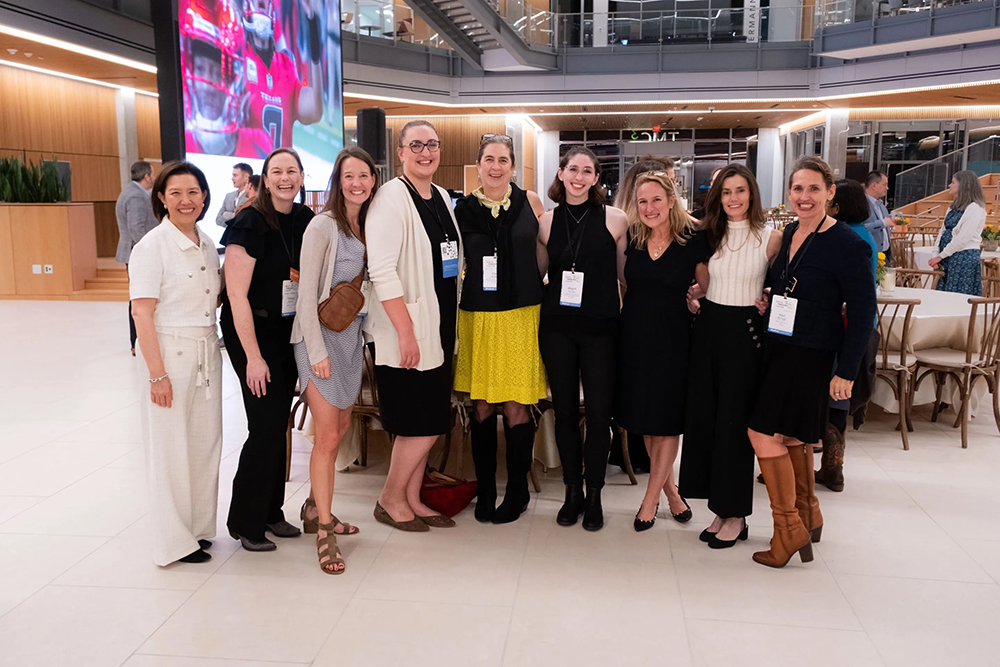
我從手術(shù)中醒來時昏昏沉沉,,腹部多了三個小切口,內(nèi)心卻前所未有的平靜,。我剛剛通過腹腔鏡切除了輸卵管,,因為這是對抗卵巢癌最佳,,甚至可能是唯一的辦法。卵巢癌很罕見,,卻是婦科最致命的癌癥,。
卵巢癌沒法檢測(有個常見的誤解是巴氏涂片能檢測,,其實查的是宮頸癌)。主要原因在于最近發(fā)現(xiàn)的事實,,約80%的卵巢癌起源于輸卵管,,而輸卵管不易觸及或活檢,。因此,癌癥通常在擴散到輸卵管外后才被發(fā)現(xiàn),,此時往往已是晚期,,治療難度大,,治愈率僅為15%。
此外,,卵巢癌及其癌前病變也無法通過血液檢測發(fā)現(xiàn),。
2023年之前我也一無所知,,后來我寫了一篇關(guān)于卵巢癌研究聯(lián)盟(OCRA)的建議才有所了解。當(dāng)時研究聯(lián)盟建議,,不管風(fēng)險高低,,所有女性都應(yīng)接受基因檢測以了解患病風(fēng)險,而且女性只要有機會都應(yīng)考慮切除輸卵管,,即在接受其他腹部手術(shù)時預(yù)防性切除輸卵管,。
這一策略從2015年起就獲得了美國婦產(chǎn)科醫(yī)師學(xué)會(American College of Obstetrics & Gynecology)認(rèn)可,,被認(rèn)為可將卵巢癌風(fēng)險降低多達(dá)60%。推廣的契機則是英國一項令人警醒的臨床試驗,,試驗跟蹤了20萬名女性超過20年,,發(fā)現(xiàn)篩查和癥狀意識并不能挽救生命,。
我曾患乳腺癌,一想到卵巢癌可能潛伏在我的輸卵管中就會不寒而栗,。所以,,最近我做一次小型腹部手術(shù)時,毫不猶豫抓住機會切除了輸卵管,。
麻醉恢復(fù)期間,切口處的疼痛以及手術(shù)中醫(yī)生為了便于操作注入腹部的氣體讓我不適了約一周,,而內(nèi)部愈合期間我一個月不能去健身房。但現(xiàn)在,,我對自己的決定非常欣慰。
再看看加拿大溫哥華市的最新研究結(jié)果,,我心里更感寬慰,。溫哥華從2010年就開始向公眾宣傳預(yù)防性切除輸卵管,,并一直跟蹤約8萬名參與者,其中一半選擇了手術(shù)另一半則沒有,。2024年3月,研究結(jié)果在美國癌癥研究協(xié)會(American Association for Cancer Research)會議上公布,,隨后最近的婦科腫瘤學(xué)會(Society of Gynecologic Oncology)年會上再次提及。結(jié)果很明顯,,輸卵管切除可將卵巢癌風(fēng)險驚人地降低 80%,。
“在醫(yī)學(xué)領(lǐng)域,,很少能將風(fēng)險降低80%,,”研究負(fù)責(zé)人,不列顛哥倫比亞大學(xué)(University of British Columbia)婦產(chǎn)科副教授吉莉安·漢利表示,,“效果非常好?!?/p>
然而,,為什么大多數(shù)女性對此一無所知?
讓更多人知道輸卵管切除
約翰霍普金斯醫(yī)療集團(tuán)(Johns Hopkins Medicine)婦科腫瘤學(xué)家麗貝卡·斯通是宣傳預(yù)防卵巢癌的領(lǐng)軍人物,。美國每年約有2萬人被診斷患有卵巢癌,超過1.2萬人因此死亡,。看到這么多患者離世,,這位外科醫(yī)生夜不能寐,。
2023年,,英國令人沮喪的試驗結(jié)果推動卵巢癌研究聯(lián)盟等組織發(fā)布新建議并引起廣泛關(guān)注,斯通才真正將推廣輸卵管切除當(dāng)成使命,。
“消息公布時,我心想,,‘哦,,太好了,。謝天謝地?!瑫r也感覺,‘準(zhǔn)備還是不充分,,’”斯通告訴《財富》。
主要原因是當(dāng)時輸卵管切除常規(guī)化的基礎(chǔ)設(shè)施尚未完善,,沒有供女性在婦科診所候診時閱讀的宣傳資料,,非婦科(甚至一些婦科)外科醫(yī)生對該手術(shù)缺乏認(rèn)知,甚至沒有確保保險覆蓋的專用計費代碼,。
就在同一時期,斯通獲邀參加“突破癌癥”(Break Through Cancer)科學(xué)咨詢委員會的會議,?!巴黄瓢┌Y”是一項由頂尖研究人員和醫(yī)生合作預(yù)防和治療最致命癌癥的計劃,。當(dāng)時有人問她知不知道如何治療卵巢癌。
“我說,,‘相信我,,我一直在努力。有時很幸運,,但多數(shù)時候只能眼睜睜看著病人去世,’”她說,?!叭缓笪艺f,,‘但其實有辦法如何預(yù)防?!彼貞浾f,,“當(dāng)時,人們都震驚了,。”連電話會議中頂尖的癌癥專家也沒聽說過輸卵管切除術(shù)的效果,。
那場會議促成了“突破癌癥”新倡議“攔截卵巢癌”,該倡議主要為了改善輸卵管癌前病變的檢測,,將輸卵管切除術(shù)作為預(yù)防手段向普通人群推廣。斯通成功與美國疾病控制與預(yù)防中心(Centers for Disease Control and Prevention)合作創(chuàng)建了該項手術(shù)專用計費代碼,,還跟紀(jì)念斯隆·凱特琳癌癥中心(Memorial Sloan Kettering)的婦科外科醫(yī)生卡拉·朗聯(lián)合發(fā)起“戰(zhàn)勝卵巢癌”活動,。

“還記得戒煙作為癌癥預(yù)防策略時怎么向公眾宣傳的嗎,?記得那些廣告牌和廣告嗎?我覺得現(xiàn)在就需要這樣的宣傳,,”“突破癌癥”總裁,,癌癥生物學(xué)家泰勒·杰克斯說,。
“這是系統(tǒng)性問題,需要在醫(yī)學(xué)界乃至更廣泛范圍進(jìn)行真正的文化變革才能解決,,”卵巢癌研究聯(lián)盟主席兼首席執(zhí)行官奧德拉·莫蘭談到輸卵管切除術(shù)推廣緩慢時表示?!斑@項手術(shù)還沒被廣泛采納,?!?/p>
確實,仍有一些障礙要克服,,包括如何在一些有色人種社區(qū)提出這一敏感問題,,因為歷史上這類社區(qū)曾有強制絕育事件,;如何說服一些外科醫(yī)生相信手術(shù)效果,因為在溫哥華研究結(jié)果之前,,所有證據(jù)都基于歷史數(shù)據(jù),;還有手術(shù)預(yù)防本身就容易讓人望而卻步。
不過斯通很快指出,,另一種手術(shù)預(yù)防方法已被廣泛接受?!熬褪墙Y(jié)腸鏡檢查,,”她說,。“而且結(jié)腸鏡檢查的風(fēng)險要高得多,,”可能出現(xiàn)腸穿孔,?!叭缓竽??5年或10年后還得再做一次?!彼雇ㄕJ(rèn)為,,輸卵管切除一勞永逸,并且“從長遠(yuǎn)來看,,成本更低”。
此外,,漢利指出,,“我們當(dāng)然不是建議每個有輸卵管的人都去做手術(shù)切除,。永遠(yuǎn)不會主動推薦。這是外科干預(yù)手段,,手術(shù)是有風(fēng)險的,。”但她認(rèn)為這種方法“讓人激動”,,因為“多年來醫(yī)學(xué)界一直缺乏不依賴生活方式的癌癥預(yù)防手段,,以往都是圍繞飲食,、運動、遠(yuǎn)離致癌環(huán)境等,,其實都很難改變,。”
你是否適合切除輸卵管,?
如果已經(jīng)生育或沒有生育計劃,,且即將接受其他腹部手術(shù),,如闌尾切除、膽囊切除,、子宮切除等,就可以選擇切除輸卵管,。
“我們真正想說的是,,如果因為其他良性疾病要接受某種手術(shù),,并且已經(jīng)安排好外科醫(yī)生,,強有力的證據(jù)表明,,如果在其他手術(shù)中增加這一操作并不會增加額外風(fēng)險,,”漢利說。
如果沒有其他手術(shù)計劃仍想切除輸卵管,,可以選擇作為絕育手段(替代輸卵管結(jié)扎),從技術(shù)上講,,確實能達(dá)到絕育效果。
還有一些高風(fēng)險人群,,例如不到1%的攜帶BRCA1或BRCA2基因突變的人,卵巢癌風(fēng)險會從1%上升到5%,,“應(yīng)該建議單獨進(jìn)行輸卵管切除以降低風(fēng)險,,”斯通說,。根據(jù)年齡不同,還可以考慮切除卵巢,。
目前還不清楚輸卵管切除的長期風(fēng)險(如果有的話),但短期內(nèi)沒有風(fēng)險,,因為輸卵管除了生殖功能外沒有其他已知用途,。這點與卵巢不同,,卵巢在絕經(jīng)后仍會分泌重要激素,她說,。
我選擇保留卵巢,。但這些決定非常個人化。我從未想過自己會選擇預(yù)防性手術(shù),,但數(shù)據(jù)說服了我。
至于斯通,她說自己在手術(shù)室里花了太多時間努力挽救“可怕疾病”的患者,,正因如此,,她絕不會放棄推廣相關(guān)知識。
她說:“我會用余生每一分鐘傳播這些信息,,盡可能讓更多人知道?!保ㄘ敻恢形木W(wǎng))
譯者:夏林
我從手術(shù)中醒來時昏昏沉沉,,腹部多了三個小切口,內(nèi)心卻前所未有的平靜,。我剛剛通過腹腔鏡切除了輸卵管,因為這是對抗卵巢癌最佳,,甚至可能是唯一的辦法,。卵巢癌很罕見,卻是婦科最致命的癌癥,。
卵巢癌沒法檢測(有個常見的誤解是巴氏涂片能檢測,其實查的是宮頸癌),。主要原因在于最近發(fā)現(xiàn)的事實,,約80%的卵巢癌起源于輸卵管,而輸卵管不易觸及或活檢,。因此,,癌癥通常在擴散到輸卵管外后才被發(fā)現(xiàn),,此時往往已是晚期,治療難度大,,治愈率僅為15%,。
此外,卵巢癌及其癌前病變也無法通過血液檢測發(fā)現(xiàn),。
2023年之前我也一無所知,后來我寫了一篇關(guān)于卵巢癌研究聯(lián)盟(OCRA)的建議才有所了解,。當(dāng)時研究聯(lián)盟建議,,不管風(fēng)險高低,所有女性都應(yīng)接受基因檢測以了解患病風(fēng)險,,而且女性只要有機會都應(yīng)考慮切除輸卵管,即在接受其他腹部手術(shù)時預(yù)防性切除輸卵管。
這一策略從2015年起就獲得了美國婦產(chǎn)科醫(yī)師學(xué)會(American College of Obstetrics & Gynecology)認(rèn)可,,被認(rèn)為可將卵巢癌風(fēng)險降低多達(dá)60%,。推廣的契機則是英國一項令人警醒的臨床試驗,,試驗跟蹤了20萬名女性超過20年,,發(fā)現(xiàn)篩查和癥狀意識并不能挽救生命。
我曾患乳腺癌,,一想到卵巢癌可能潛伏在我的輸卵管中就會不寒而栗,。所以,最近我做一次小型腹部手術(shù)時,,毫不猶豫抓住機會切除了輸卵管。
麻醉恢復(fù)期間,,切口處的疼痛以及手術(shù)中醫(yī)生為了便于操作注入腹部的氣體讓我不適了約一周,,而內(nèi)部愈合期間我一個月不能去健身房,。但現(xiàn)在,我對自己的決定非常欣慰,。
再看看加拿大溫哥華市的最新研究結(jié)果,,我心里更感寬慰。溫哥華從2010年就開始向公眾宣傳預(yù)防性切除輸卵管,,并一直跟蹤約8萬名參與者,其中一半選擇了手術(shù)另一半則沒有,。2024年3月,,研究結(jié)果在美國癌癥研究協(xié)會(American Association for Cancer Research)會議上公布,隨后最近的婦科腫瘤學(xué)會(Society of Gynecologic Oncology)年會上再次提及,。結(jié)果很明顯,輸卵管切除可將卵巢癌風(fēng)險驚人地降低 80%,。
“在醫(yī)學(xué)領(lǐng)域,,很少能將風(fēng)險降低80%,”研究負(fù)責(zé)人,,不列顛哥倫比亞大學(xué)(University of British Columbia)婦產(chǎn)科副教授吉莉安·漢利表示,“效果非常好?!?/p>
然而,,為什么大多數(shù)女性對此一無所知?
讓更多人知道輸卵管切除
約翰霍普金斯醫(yī)療集團(tuán)(Johns Hopkins Medicine)婦科腫瘤學(xué)家麗貝卡·斯通是宣傳預(yù)防卵巢癌的領(lǐng)軍人物,。美國每年約有2萬人被診斷患有卵巢癌,超過1.2萬人因此死亡,??吹竭@么多患者離世,這位外科醫(yī)生夜不能寐,。
2023年,英國令人沮喪的試驗結(jié)果推動卵巢癌研究聯(lián)盟等組織發(fā)布新建議并引起廣泛關(guān)注,,斯通才真正將推廣輸卵管切除當(dāng)成使命,。
“消息公布時,,我心想,‘哦,,太好了,。謝天謝地?!瑫r也感覺,‘準(zhǔn)備還是不充分,,’”斯通告訴《財富》,。
主要原因是當(dāng)時輸卵管切除常規(guī)化的基礎(chǔ)設(shè)施尚未完善,沒有供女性在婦科診所候診時閱讀的宣傳資料,,非婦科(甚至一些婦科)外科醫(yī)生對該手術(shù)缺乏認(rèn)知,甚至沒有確保保險覆蓋的專用計費代碼,。
就在同一時期,,斯通獲邀參加“突破癌癥”(Break Through Cancer)科學(xué)咨詢委員會的會議?!巴黄瓢┌Y”是一項由頂尖研究人員和醫(yī)生合作預(yù)防和治療最致命癌癥的計劃。當(dāng)時有人問她知不知道如何治療卵巢癌,。
“我說,,‘相信我,,我一直在努力,。有時很幸運,但多數(shù)時候只能眼睜睜看著病人去世,,’”她說,。“然后我說,,‘但其實有辦法如何預(yù)防,。’”她回憶說,,“當(dāng)時,,人們都震驚了?!边B電話會議中頂尖的癌癥專家也沒聽說過輸卵管切除術(shù)的效果,。
那場會議促成了“突破癌癥”新倡議“攔截卵巢癌”,,該倡議主要為了改善輸卵管癌前病變的檢測,將輸卵管切除術(shù)作為預(yù)防手段向普通人群推廣,。斯通成功與美國疾病控制與預(yù)防中心(Centers for Disease Control and Prevention)合作創(chuàng)建了該項手術(shù)專用計費代碼,,還跟紀(jì)念斯隆·凱特琳癌癥中心(Memorial Sloan Kettering)的婦科外科醫(yī)生卡拉·朗聯(lián)合發(fā)起“戰(zhàn)勝卵巢癌”活動。
“還記得戒煙作為癌癥預(yù)防策略時怎么向公眾宣傳的嗎,?記得那些廣告牌和廣告嗎?我覺得現(xiàn)在就需要這樣的宣傳,,”“突破癌癥”總裁,,癌癥生物學(xué)家泰勒·杰克斯說。
“這是系統(tǒng)性問題,,需要在醫(yī)學(xué)界乃至更廣泛范圍進(jìn)行真正的文化變革才能解決,”卵巢癌研究聯(lián)盟主席兼首席執(zhí)行官奧德拉·莫蘭談到輸卵管切除術(shù)推廣緩慢時表示,?!斑@項手術(shù)還沒被廣泛采納,?!?/p>
確實,仍有一些障礙要克服,,包括如何在一些有色人種社區(qū)提出這一敏感問題,因為歷史上這類社區(qū)曾有強制絕育事件,;如何說服一些外科醫(yī)生相信手術(shù)效果,,因為在溫哥華研究結(jié)果之前,所有證據(jù)都基于歷史數(shù)據(jù),;還有手術(shù)預(yù)防本身就容易讓人望而卻步。
不過斯通很快指出,,另一種手術(shù)預(yù)防方法已被廣泛接受,?!熬褪墙Y(jié)腸鏡檢查,”她說,。“而且結(jié)腸鏡檢查的風(fēng)險要高得多,,”可能出現(xiàn)腸穿孔,。“然后呢,?5年或10年后還得再做一次?!彼雇ㄕJ(rèn)為,,輸卵管切除一勞永逸,并且“從長遠(yuǎn)來看,,成本更低”。
此外,,漢利指出,,“我們當(dāng)然不是建議每個有輸卵管的人都去做手術(shù)切除。永遠(yuǎn)不會主動推薦,。這是外科干預(yù)手段,手術(shù)是有風(fēng)險的,?!钡J(rèn)為這種方法“讓人激動”,,因為“多年來醫(yī)學(xué)界一直缺乏不依賴生活方式的癌癥預(yù)防手段,,以往都是圍繞飲食,、運動,、遠(yuǎn)離致癌環(huán)境等,,其實都很難改變,。”
你是否適合切除輸卵管,?
如果已經(jīng)生育或沒有生育計劃,,且即將接受其他腹部手術(shù),如闌尾切除,、膽囊切除,、子宮切除等,就可以選擇切除輸卵管,。
“我們真正想說的是,,如果因為其他良性疾病要接受某種手術(shù),,并且已經(jīng)安排好外科醫(yī)生,,強有力的證據(jù)表明,如果在其他手術(shù)中增加這一操作并不會增加額外風(fēng)險,,”漢利說,。
如果沒有其他手術(shù)計劃仍想切除輸卵管,,可以選擇作為絕育手段(替代輸卵管結(jié)扎),從技術(shù)上講,,確實能達(dá)到絕育效果,。
還有一些高風(fēng)險人群,例如不到1%的攜帶BRCA1或BRCA2基因突變的人,,卵巢癌風(fēng)險會從1%上升到5%,“應(yīng)該建議單獨進(jìn)行輸卵管切除以降低風(fēng)險,,”斯通說,。根據(jù)年齡不同,還可以考慮切除卵巢,。
目前還不清楚輸卵管切除的長期風(fēng)險(如果有的話),,但短期內(nèi)沒有風(fēng)險,因為輸卵管除了生殖功能外沒有其他已知用途,。這點與卵巢不同,卵巢在絕經(jīng)后仍會分泌重要激素,,她說,。
我選擇保留卵巢。但這些決定非常個人化,。我從未想過自己會選擇預(yù)防性手術(shù),但數(shù)據(jù)說服了我,。
至于斯通,,她說自己在手術(shù)室里花了太多時間努力挽救“可怕疾病”的患者,正因如此,,她絕不會放棄推廣相關(guān)知識,。
她說:“我會用余生每一分鐘傳播這些信息,,盡可能讓更多人知道?!保ㄘ敻恢形木W(wǎng))
譯者:夏林
I woke up from surgery groggy, with three minuscule incisions in my abdomen and huge peace of mind. I’d just had my fallopian tubes laparoscopically removed, as it’s the best—and possibly only—defense against ovarian cancer, which, though rare, is the most lethal gynecological cancer there is.
There is no detection method for ovarian cancer (a common misunderstanding is that it’s the Pap smear, but that’s for cervical cancer). That’s largely because of something discovered relatively recently: About 80% of the time, cancer of the ovaries forms in the fallopian tubes, which are not easily reached or biopsied. So the cancer is not found until it spreads beyond the tubes, by which point it has typically reached a later stage and is harder to treat, with cure rates as low as 15%.
The cancer and its pre-cancer lesions are also not detectable through blood tests.
I myself had no idea about any of this until 2023, when I wrote about the Ovarian Cancer Research Alliance (OCRA) making sweeping recommendations: that all women get genetically tested to know their risk of the disease, and that all women, regardless of their risk factor, consider having what’s called an opportunistic salpingectomy—the prophylactic removal of fallopian tubes if and when they are already having another abdominal surgery.
The strategy—endorsed by the American College of Obstetrics & Gynecology since 2015—was believed to cut down the risk of ovarian cancer by up to 60%. It was adopted as a wide recommendation after a sobering U.K.-based clinical trial followed 200,000 women for more than 20 years and found that screening and symptom awareness do not save lives.
As a breast cancer survivor, the idea of ovarian cancer possibly hanging out in my fallopian tubes was haunting. So when I had the opportunity to get them removed during a recent minor abdominal surgery, I seized it.
Recovery from the anesthesia—along with incision-site soreness and uncomfortable bloating from the gas the surgeon pumped into my belly so she could see her way around—slowed me down for about a week, while waiting for the internal healing kept me out of the gym for a month. But now I feel incredibly relieved about my decision.
That’s especially true in light of major new findings out of Vancouver, British Columbia, which started a public campaign about prophylactic salpingectomy in 2010 and has been following about 80,000 people—half who opted for the procedure and half who did not—ever since. The results, announced in March 2024 at a meeting of the American Association for Cancer Research and again at a recent annual meeting of the Society of Gynecologic Oncology, were major: that salpingectomy cuts down one’s risk of ovarian cancer by a staggering 80%.
“There’s very little in medicine that gets you an 80% risk reduction,” says study lead Gillian Hanley, associate professor of obstetrics and gynecology at the University of British Columbia. “It’s remarkable.”
So why don’t more women know about it?
The effort to raise awareness of opportunistic salpingectomy
Dr. Rebecca Stone, a gynecologic oncologist at Johns Hopkins Medicine, is a leader in the effort to get the word out about preventing ovarian cancer—diagnosed in about 20,000 Americans a year and killing over 12,000. Seeing so many patients die was something that kept the surgeon awake at night.
She began to truly make opportunistic salpingectomy her mission starting in 2023, when the dismal U.K. trial results prompted organizations like OCRA to make headlines with the new recommendations.
“When all that came out, I was like, ‘Oh, great. Thank God.’ But I was also like, ‘We’re not ready yet,’” Stone tells Fortune.
That’s because there was no infrastructure around making salpingectomy the norm—no educational materials for women to leaf through while waiting at the gynecologist’s office, no awareness among non-gynecological (and even some gynecological) surgeons about offering the procedure, and not even any billing codes that would make insurance coverage for the procedure possible.
Around the same time, Stone was asked to join a meeting of the scientific advisory board for Break Through Cancer, a collaborative effort among top researchers and physicians to prevent and cure the deadliest cancers. Someone asked her if she knew how to cure ovarian cancer.
“I was like, ‘Believe me, I’ve been trying. Sometimes we get lucky, but most of the time I bury my patients,’” she says. “And then I said, ‘But we do know how to prevent it.’” At that, she recalls, “People’s hair blew back.” Not even the top cancer minds on the call had heard about the effectiveness of salpingectomy.
That call led to the creation of a new Break Through Cancer initiative, Intercepting Ovarian Cancer, which aims to both improve detection of fallopian tube pre-cancers and to expand salpingectomy as a prevention tool within the general population. Stone has already succeeded in working with the Centers for Disease Control and Prevention to create specific billing codes for the procedure, and is now gearing up to launch the Outsmart Ovarian Cancer Campaign with Memorial Sloan Kettering gynecologic surgeon Dr. Kara Long.
“Remember when smoking cessation was a cancer prevention strategy that people got behind? The billboards and advertisements? That is, I think, what we need here,” says cancer biologist Tyler Jacks, Break Through Cancer’s president.
“This is a systemic problem that will take true cultural change within the medical community and beyond to solve,” adds OCRA president and CEO Audra Moran about the slow adoption of salpingectomy. “We know it’s not being adopted as widely as it could be.”
Indeed, there are still barriers to the effort—including how to present the issue with sensitivity in some communities of color, which carry the historic U.S. burden of coercive sterilization; convincing some surgeons that there is enough evidence behind it, as all of it up until the Vancouver findings has been based on historic data; and also the idea of surgical prevention itself, which can be off-putting.
But there is another surgical prevention embraced as the norm, Stone is quick to point out. “It’s called a colonoscopy,” she says. “And the risks of the colonoscopy are much higher,” including the possibility of bowel perforation. “And then, guess what? You have to do it all again in five or 10 years.” Salpingectomy, she argues, is a one-and-done, and is “much more cost-saving” in the long run.
Plus, notes Hanley, “of course, we are not suggesting that every person with fallopian tubes needs to go and have them surgically removed. That will never be the recommendation. It is a surgical intervention, and surgery is not without risk.” But she does see the approach as “exciting,” as, “for so many years, we have not had a lot of cancer prevention that was not lifestyle-focused—revolving around diet, exercise, environmental exposure to carcinogens, and things that are really challenging to change.”
Is salpingectomy right for you?
Anyone finished having children or not planning on having children who is already going to have another abdominal surgery—appendectomy, gallbladder removal, hysterectomy, for example—is a candidate for opportunistic salpingectomy.
“What we’re really saying is that if you are already having some kind of a surgery, because of some other benign disease that you’re treating, and the surgeon is there already, we have really compelling evidence that adding this to another procedure does not change your risks at all compared to what you would already risk with surgery,” Hanley says.
If you’re not having another surgery and really want your fallopian tubes removed anyway, you could opt to do it as a route to sterilization (instead of tubal ligation), which it technically is.
Women at high risk—such as the less than 1% who have a genetic mutation such as BRCA1 or BRCA2, which raises the risk of ovarian cancer from 1% to 5%—“should be recommended a stand-alone salpingectomy for risk reduction,” says Stone. They might also consider an oophorectomy—removal of the ovaries—depending on their age, she adds.
While the long-term risks of salpingectomy, if any, are not known, there are no short-term risks, as fallopian tubes don’t serve any known purpose beyond reproduction—as opposed to the ovaries, which still produce important hormones likely well beyond menopause, she says.
I opted to keep my ovaries. But these decisions are, of course, highly personal. I never thought I’d be someone to get elective surgery in the first place, but the statistics convinced me.
As for Stone, she says she has spent too many hours in the operating room trying to save patients “with this horrible disease” to give up on awareness.
“I am going to spend every minute of my remaining life to get this information out there,” she says, “and to reach as many people as humanly possible.”






